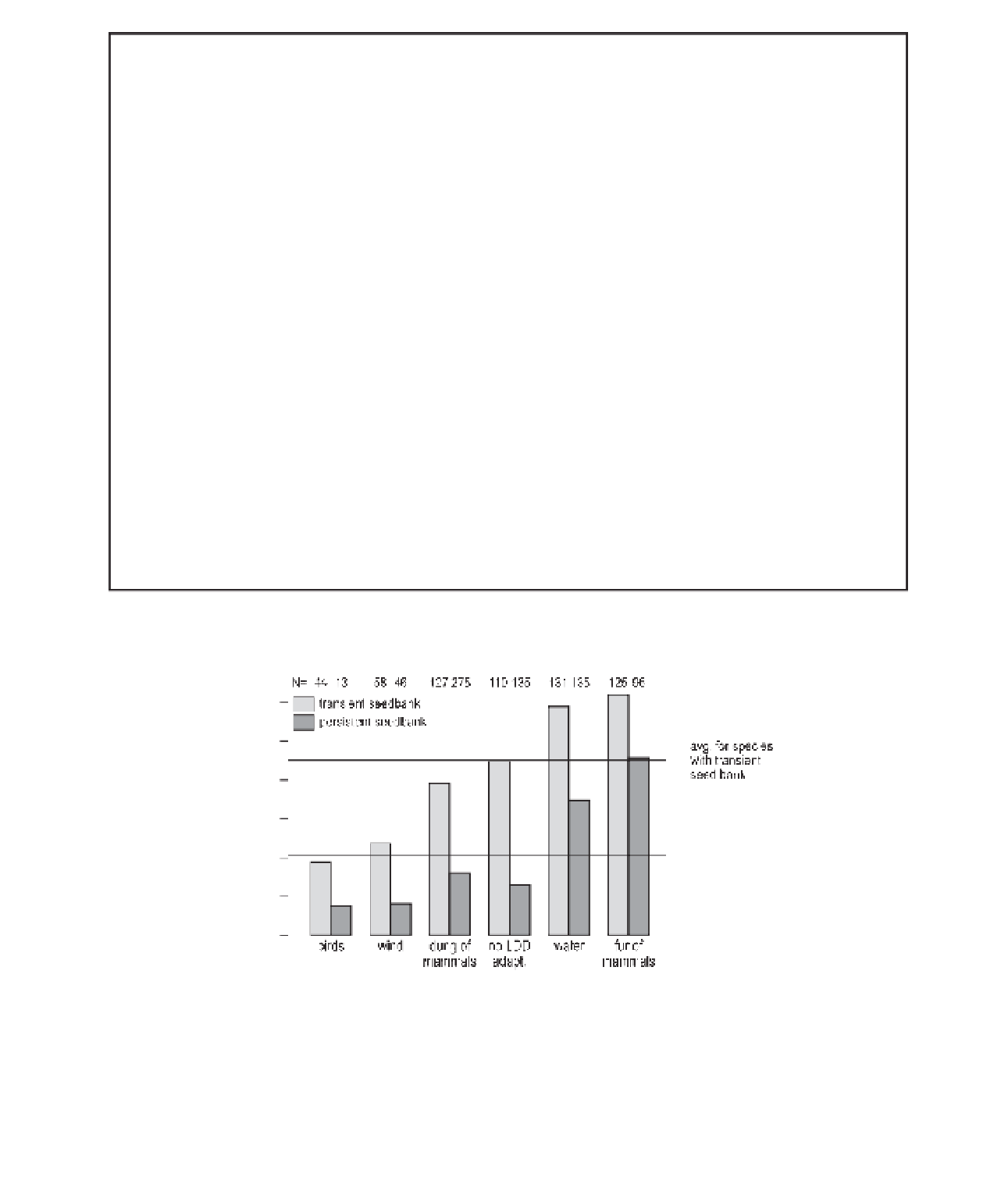Environmental Engineering Reference
In-Depth Information
Box 14.1 Dispersal failure contributes to plant losses in north-western
European countries
Dry grasslands and heathlands have suffered from
habitat fragmentation. For the prediction of successful
restoration, it is important to know which species will
have diffi culties to arrive at sites to under restoration.
The importance of long-distance dispersal capacity of
plants and the impact of the reduction of dispersal
vectors in the current fragmented landscape was
studied by Ozinga
et al
. (2009). The ability to track the
changes in habitat confi guration, through seed disper-
sal in space (long-distance dispersal by various dis-
persal vectors) and/or time (formation of a long-term
persistent seed bank) appears to be a major determi-
nant of regional species dynamics. The researchers
had access to two large, up-to-date databases that
enabled them to monitor plant distribution develop-
ments on a large spatial scale as well as the presence
or absence of individual species at individual sites. The
fi rst database contains information on long-term
changes in the frequency of occurrence of vascular
plants and is based on repeated inventories of over
200 000 grid cells in the Netherlands, Germany and
Great Britain, recorded over the twentieth century. The
second is the LEDA database containing quantitative
information for over 20 plant characteristics of more
than 3000 vascular plant species in north-western
Europe (also covering the three countries listed above)
(Kleyer
et al
. 2008).
Ozinga
et al
. (2009) selected the plant charac-
teristics most useful for discriminating between
species with different dispersal traits and hence were
able to explain plant species losses according to
their dispersal capacity. They found that dispersal
traits make a large and signifi cant contribution to
explaining interspecifi c patterns of species losses, of
the same order of magnitude as the effect of eutrophi-
cation (see section 14.3.1). Interspecifi c differences
in dispersal traits are thus good predictors of the
extinction risk for plant species. The results are con-
sistent across all three countries listed above. Species
with a high potential for dispersal in the fur of large
mammals or by running water are signifi cantly more
likely to decline than those using other dispersal
vectors (Figure 14.2). Conversely, species with a high
potential for dispersal by wind or birds are less likely
to decline. The results also demonstrate that species
with the ability to accumulate a persistent soil seed
bank ('dispersal through time') perform relatively well
(Figure 14.2).
Figure 14.2
Percentages of plant species declining by more than 25% over the twentieth century for fi ve long - distance
dispersal (LDD) vectors. Species are divided into two groups for each dispersal vector, according to their ability to accumulate a
persistent soil seed bank. Horizontal lines indicate the average percentages (geometric means) for species with a persistent soil
seed bank and those with a transient seed bank (data from the Netherlands). (Modifi ed from Ozinga
et al
. 2009 .)










